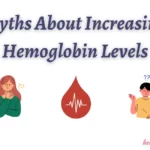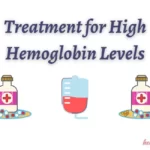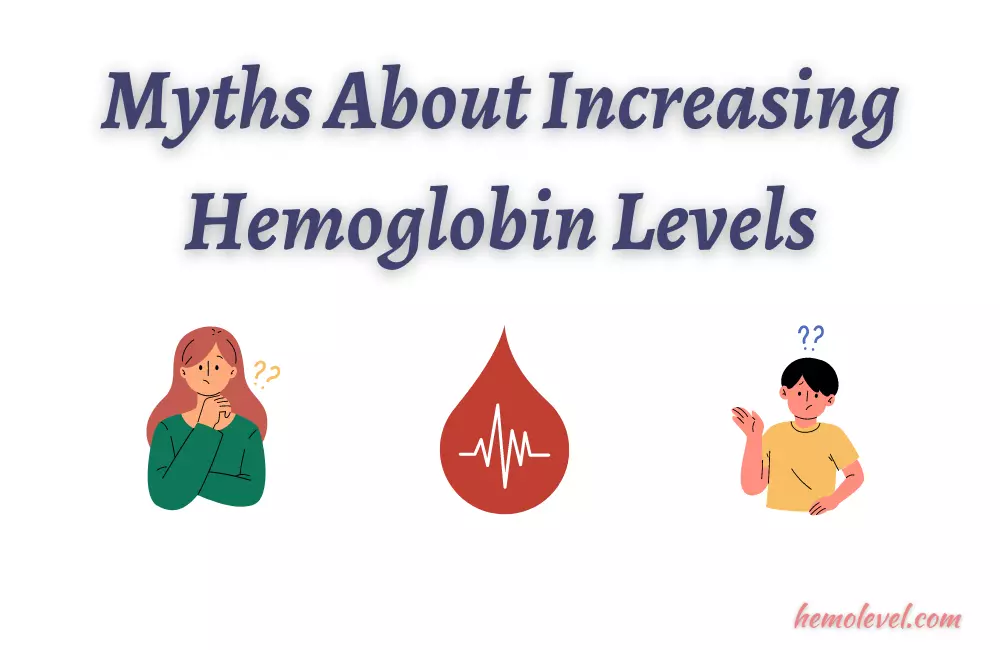Myths about increasing Hemoglobin Levels
Last updated on December 14th, 2023
Introduction:
Welcome to my blog where we will be discussing some common myths about increasing hemoglobin levels. Hemoglobin is an essential protein in our body that is responsible for carrying oxygen from the lungs to other parts of the body. It is a vital component of red blood cells that helps us stay healthy and active. However, many people are unaware of the best ways to increase their hemoglobin levels, which has given rise to a number of myths surrounding this topic.
In this blog post, we will explore some of the most common myths about increasing hemoglobin levels. We will delve into the science behind these myths and provide evidence-based facts to help you make informed decisions about your health. So, if you’re looking to improve your hemoglobin levels, then keep reading to learn the truth about some of the most common misconceptions out there.
Myth #1: Eating red meat is the only way to increase hemoglobin levels:
There’s no denying that red meat is a good source of iron, which is essential for increasing hemoglobin levels in the body. However, it is a common misconception that red meat is the only food that can help increase hemoglobin levels. In fact, there are a variety of iron-rich foods that can be incorporated into your diet to help increase hemoglobin levels.
Red meat is a good source of heme iron, which is more easily absorbed by the body than non-heme iron found in plant-based foods. However, if you’re not a fan of red meat or follow a vegetarian or vegan diet, you can still increase your hemoglobin levels through other iron-rich foods.
Some of the best plant-based sources of iron include legumes such as lentils, chickpeas, and kidney beans, as well as leafy green vegetables like spinach and kale. Nuts and seeds such as pumpkin seeds and cashews are also good sources of iron. Additionally, fortified cereals and bread can be a convenient way to increase iron intake.
It’s important to note that while plant-based sources of iron are beneficial, they may not be absorbed as efficiently as the heme iron found in red meat. To improve the absorption of non-heme iron, it’s recommended to pair iron-rich foods with vitamin C-rich foods like citrus fruits, berries, and bell peppers.
In conclusion, red meat is a good source of heme iron. But it is not the only way to increase hemoglobin levels. Incorporating a variety of iron-rich foods into your diet, both plant-based and animal-based, can help improve your hemoglobin levels and promote overall health.
Myth #2: Taking iron supplements will quickly increase hemoglobin levels:
Iron supplements are often recommended to people with low hemoglobin levels. They can be effective in increasing iron levels in the body. But it is a common misconception that taking iron supplements will quickly increase hemoglobin levels.
Iron supplements work by providing the body with an additional source of iron. This can help increase the production of red blood cells and ultimately improve hemoglobin levels. However, the effects of iron supplements can take several weeks or even months to become noticeable.
It’s also important to note that taking too much iron can be harmful to the body. Overdosing on iron supplements can lead to iron toxicity, which can cause symptoms such as nausea, vomiting, and abdominal pain. Additionally, high levels of iron can be harmful to people with certain medical conditions such as hemochromatosis.
Iron supplements can also cause side effects such as constipation, diarrhea, and stomach cramps. Some people may also experience nausea and vomiting when taking iron supplements.
If you are considering taking iron supplements, it is important to talk to your healthcare provider first. They can help determine whether you have an iron deficiency, how much iron you need, and the best way to increase your iron levels. Additionally, they can provide guidance on how to avoid potential risks and side effects.
In conclusion, while iron supplements can be effective in increasing hemoglobin levels, they are not a quick fix. It’s important to use them as directed by a healthcare provider and be aware of potential risks and side effects. A balanced diet that includes iron-rich foods is also important in improving hemoglobin levels.
Myth #3: Drinking alcohol can increase hemoglobin levels:
This is a common myth that is not true. In fact, drinking alcohol can actually decrease hemoglobin levels in the body.
Alcohol is a diuretic, which means it causes the body to lose fluids and electrolytes, including iron. When iron levels in the body are low, the production of red blood cells can be reduced, ultimately leading to a decrease in hemoglobin levels.
Additionally, excessive alcohol consumption can lead to liver damage, which can affect the body’s ability to produce and regulate hemoglobin. Chronic liver disease can also cause anemia, a condition in which there are not enough red blood cells in the body to carry oxygen.
It’s important to note that moderate alcohol consumption is not necessarily harmful. But excessive alcohol consumption can have serious health consequences, including anemia, liver disease, and many other health issues.
In conclusion, drinking alcohol is not a way to increase hemoglobin levels. In fact, excessive alcohol consumption can decrease hemoglobin levels and lead to serious health consequences. It’s essential to maintain a balanced diet that includes iron-rich foods. And to talk to your healthcare provider if you are concerned about your hemoglobin levels.
Myth #4: Doing a blood transfusion is the quickest way to increase hemoglobin levels:
A blood transfusion is a medical procedure in which blood is transferred from one person to another. While it is true that a blood transfusion can quickly increase hemoglobin levels in the body. But it is not always the best or safest option.
Blood transfusions are typically only recommended in emergency situations or when a person’s hemoglobin levels are dangerously low. They are not a long-term solution for increasing hemoglobin levels, and they come with potential risks and side effects.
One of the most significant risks associated with blood transfusions is the risk of infection. Transfused blood must be carefully screened and tested for infections. But there is always a risk of transmission of blood-borne diseases. Additionally, some people may have an allergic reaction to transfused blood, which can cause symptoms such as hives, itching, and difficulty breathing.
Blood transfusions are also not without potential complications. Some people may experience a reaction to the transfused blood, which can cause fever, chills, and low blood pressure. Additionally, repeated blood transfusions can cause a build-up of iron in the body, which can lead to iron overload and damage to the liver and other organs.
In conclusion, while a blood transfusion can quickly increase hemoglobin levels, it is not always the best or safest option. Blood transfusions come with potential risks and side effects, and they are typically only recommended in emergency situations or when a person’s hemoglobin levels are dangerously low. It’s important to work with your healthcare provider to determine the best and safest way to increase your hemoglobin levels.
Conclusion:
In conclusion, there are several myths surrounding the topic of increasing hemoglobin levels. It’s important to separate fact from fiction when it comes to your health.
In reality, there are many ways to increase hemoglobin levels. Like eating a balanced diet that includes iron-rich foods, taking iron supplements under the guidance of a healthcare provider, avoiding excessive alcohol consumption, and engaging in regular physical activity.
It’s important to work with your healthcare provider to determine the best and safest way to increase your hemoglobin levels. Particularly, if you have a medical condition or are taking medication that affects your hemoglobin levels.
By understanding the truth about hemoglobin levels and taking steps to improve them, you can help maintain your overall health and well-being.
Stay Healthy, Stay Happy!!!
Also Read:
- Most Common Questions on Hemoglobin Levels

- Myths about increasing Hemoglobin Levels

- Treatment for High Hemoglobin Levels: How to Lower Your Levels Safely

For more information visit: hemolevel.com
